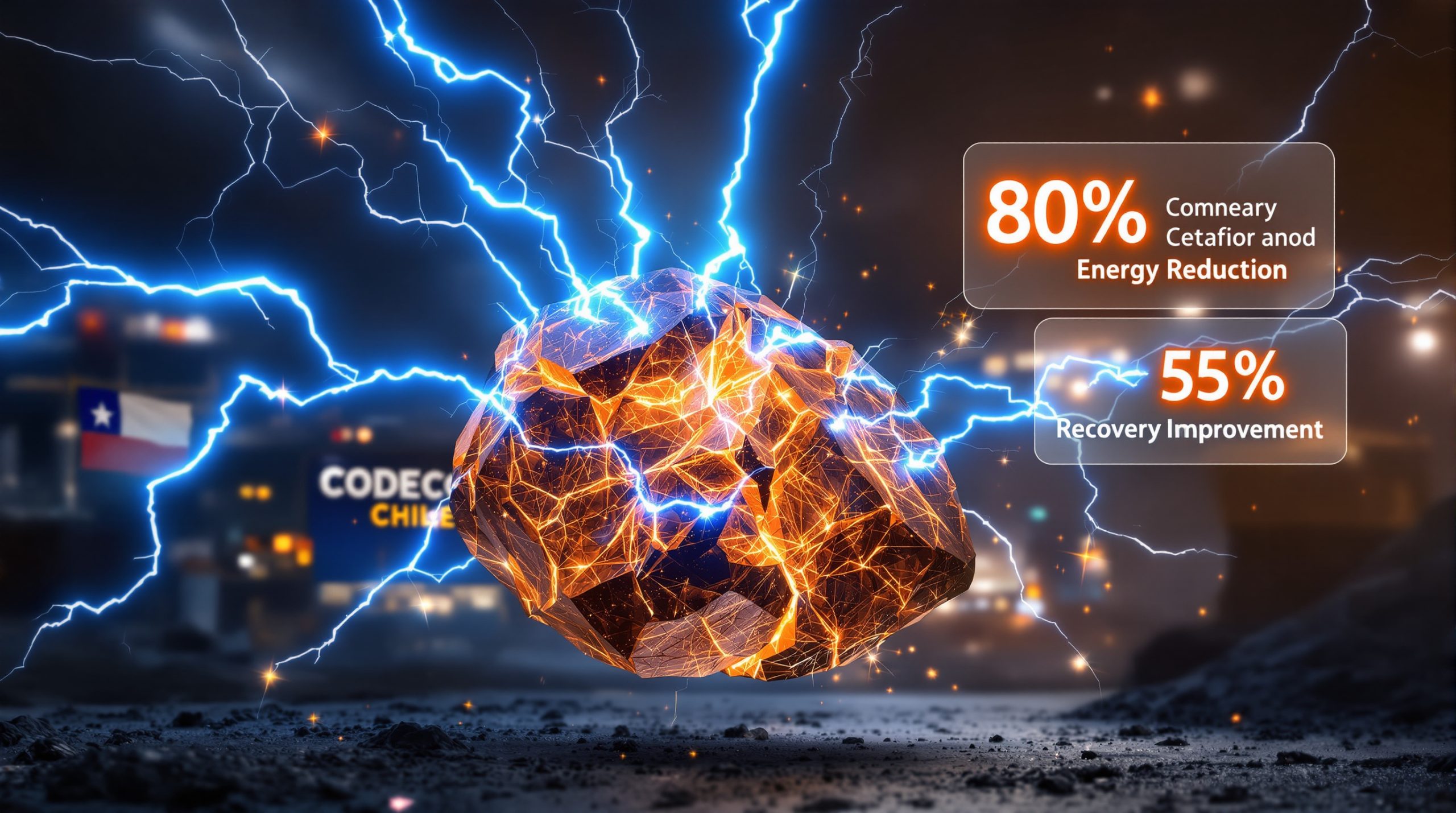Understanding the US-Ukraine Minerals Deal: A Strategic Partnership for Critical Resources
The United States and Ukraine finalized a landmark minerals agreement on April 30th, establishing a framework for cooperation on critical mineral development. This deal, pending approval by Ukraine's parliament, creates a reconstruction investment fund with equal 50/50 ownership between both nations. The US-Ukraine minerals deal represents a significant shift in international resource partnerships and follows months of complex negotiations.
Key Components of the Minerals Deal
The US-Ukraine minerals partnership centers on equal ownership and mutual benefits, with several distinguishing features that set it apart from traditional extraction agreements. The reconstruction investment fund maintains a strict 50/50 ownership split, ensuring balanced control and benefit distribution. Importantly, financing is limited exclusively to new licenses for critical materials, oil, and gas—safeguarding Ukraine's existing revenue streams.
One of the most significant aspects is that Ukraine isn't required to repay US wartime aid through this agreement, preserving the nation's fiscal autonomy during reconstruction. The deal covers 55 specific minerals with provisions to add more through mutual consent, creating a flexible framework that can adapt to changing technological needs and global commodities market insights.
While the US gains preferential extraction rights, Ukraine maintains final approval authority and retains full ownership of its subsoil resources—a crucial sovereignty protection that distinguishes this from historical extraction agreements that often disadvantaged host countries.
How Does This Agreement Benefit Both Nations?
The minerals partnership addresses strategic priorities for both countries amid growing global competition for critical resources. This collaboration comes at a critical time, with Ukraine's economy showing signs of strain—GDP contracted by 0.3% in Q1 2023, highlighting the urgent need for economic revitalization initiatives.
Ukraine's Strategic Advantages
For Ukraine, the agreement represents a pathway to economic recovery without compromising sovereignty. By maintaining final decision-making authority over resource development, Ukraine protects its long-term interests while attracting much-needed investment. The arrangement specifically excludes existing resource projects from the fund's scope, ensuring current government revenues remain untouched.
Perhaps most importantly, Ukraine isn't required to repay US wartime assistance through mineral concessions—a significant departure from historical patterns where debts often led to resource exploitation. As Ukrainian negotiators emphasized, this "no repayment requirement for wartime aid" represents a critical fiscal safeguard for the war-torn nation.
The deal also establishes a framework for potential additional US assistance, including advanced defense systems that could enhance security for mining operations in conflict-adjacent areas—addressing both economic and security concerns simultaneously.
US Strategic Advantages
From the American perspective, securing preferential access to 55 critical minerals addresses urgent supply chain vulnerabilities. With China currently supplying approximately 80% of US rare earth imports according to the US International Trade Commission (2023), diversification represents a national security imperative.
The agreement strengthens the US-Ukraine alliance beyond military dimensions, creating economic interdependence that serves both nations' long-term interests. For American technology and defense sectors, access to titanium (crucial for aerospace applications including F-35 fighter jets) and other strategic materials reduces vulnerability to critical mineral export restrictions from less reliable sources.
The partnership also aligns with broader US efforts to build "friendly" supply chains with allied nations, creating resilient resource networks less susceptible to geopolitical leverage.
What Critical Minerals Does Ukraine Possess?
Ukraine's geological wealth includes numerous resources vital to modern technologies and industries, though commercial viability requires additional exploration and assessment using modern techniques.
Ukraine's Mineral Resources Landscape
Ukraine holds Europe's largest manganese reserves—a critical element for steel production and energy storage technologies. The country also possesses significant deposits of lithium, titanium, and graphite, all essential for the renewable energy transition and electric vehicle manufacturing.
The nation's nickel, cobalt, and copper resources provide vital inputs for battery technologies and electrical infrastructure. Ukraine's zirconium deposits are particularly valuable for nuclear reactors and aerospace applications, while its natural gas and petroleum reserves offer energy security benefits.
What makes Ukraine's mineral portfolio particularly strategic is its combination of traditional industrial minerals alongside technology-critical elements—providing diversification across multiple supply chains and technological applications.
Exploration Challenges and Opportunities
The full potential of Ukraine's mineral wealth remains partially obscured by outdated geological data. Most comprehensive surveys date back to the Soviet era, creating an urgent need for modern exploration techniques to verify commercial viability and accurate reserve estimates.
The ongoing conflict presents significant challenges, with industry analysts noting that "war-related access limitations" in eastern regions have delayed exploration activities, particularly in potentially resource-rich areas. These security concerns will require targeted solutions before full-scale development can proceed.
Despite these challenges, modern exploration technologies offer significant opportunities for new discoveries. Advanced geophysical survey methods, satellite imaging, and computational modeling could reveal deposits that were undetectable using Soviet-era techniques—potentially uncovering resources that exceed current estimates.
Successfully developing Ukraine's mineral potential will require substantial investment in geological data collection and analysis—an area where international expertise could provide immediate value through the partnership framework.
Why Are Critical Minerals Increasingly Important?
The global race for critical minerals has intensified dramatically as these resources become essential to technological leadership, energy transition, and national security objectives.
Strategic Applications of Critical Minerals
Electric vehicle manufacturing exemplifies the minerals crisis facing advanced economies. According to International Energy Agency forecasts, EV battery production will require a 500% increase in lithium supply by 2030—with similar growth trajectories for cobalt and nickel. Ukraine's deposits of these materials could help address mineral shortage challenges facing many countries.
Renewable energy infrastructure represents another mineral-intensive sector. Wind turbines require rare earth elements for permanent magnets, while solar panels depend on silver, silicon, and various semiconductor materials. Copper demand for renewables infrastructure is projected to rise by approximately 15% annually through 2030 (BloombergNEF, 2024).
Defense applications further underscore the strategic importance of these resources. Titanium's role in advanced aircraft, beryllium in precision guidance systems, and rare earths in radar technology create direct links between mineral access and military capability.
Semiconductor manufacturing—the foundation of digital infrastructure—relies on specialized elements like gallium and germanium that face supply constraints. As communications networks expand, particularly with 5G deployment, demand for copper, aluminum, and rare earths continues to accelerate.
Geopolitical Dimensions of Mineral Supply
The mineral supply landscape is dominated by concerning concentration. China currently processes approximately 90% of global rare earths according to USGS data, creating significant leverage over technology supply chains. This dominance has prompted the US, EU, and allies to pursue aggressive supply diversification strategies.
Nations increasingly recognize minerals as national security assets rather than mere commodities—integrating resource strategies into broader foreign policy frameworks. The US-Ukraine partnership exemplifies this approach, addressing both immediate security concerns and long-term resource requirements.
The concept of "friendly" supply chains has emerged as a guiding principle, with allied nations establishing preferential resource arrangements based on shared values and interests. The US-Ukraine minerals deal represents one of the most significant recent examples of this trend, potentially establishing a template for similar agreements with other resource-rich partners.
How Will the Agreement Impact Global Mineral Markets?
The US-Ukraine partnership represents a significant development in the restructuring of global critical mineral supply chains, potentially influencing market dynamics and international resource diplomacy.
Market Implications
The agreement signals potential diversification in critical mineral supplies that could reduce price volatility and supply constraints over the medium term. While Ukrainian production won't immediately displace existing suppliers, the market anticipates a gradual shift in supply patterns as investment flows into exploration and development.
Investment analysts project a possible surge in Ukrainian extraction and processing capacity, particularly for lithium, titanium, and manganese—resources with established reserves and clear market demand. This development could be particularly significant for lithium markets, with some projections suggesting "Ukraine could become a top-10 lithium producer by 2030," according to McKinsey & Company analysis.
The partnership sends unmistakable market signals about Western commitment to supply chain resilience, potentially triggering similar initiatives with other resource-rich nations. This benchmark for international mineral partnerships could reshape how resource agreements are structured, moving away from traditional extraction models toward more balanced approaches.
For dominant suppliers like China, the agreement represents a modest but meaningful challenge to market position. While Chinese processing dominance won't disappear overnight, preferential US access to Ukrainian resources could reduce Chinese market dominance by an estimated 15-20% in key minerals by 2030.
Investment Outlook
The agreement creates significant opportunities for mining stocks guide stakeholders with expertise in critical minerals, particularly those with experience in challenging operational environments. Processing and refining infrastructure represents another high-potential investment area, as Ukraine currently lacks adequate capacity to process many extracted minerals domestically.
Developing Ukraine's mineral potential requires substantial capital investment in exploration and development—estimated in the billions of dollars before reaching full production capacity. This requirement creates opportunities for international mining firms, equipment suppliers, and specialized service providers.
Risk considerations related to the ongoing conflict and political stability will necessitate careful investment approaches, likely involving political risk insurance and phased development strategies. The security situation remains fluid, making risk assessment a continuous requirement for investors.
Despite these challenges, the long-term potential for Ukraine to emerge as a significant European supplier of critical minerals remains compelling. The combination of geological potential, strategic location, and international support creates a unique investment proposition that could reshape mineral supply dynamics across multiple industries.
What Challenges Could Affect Implementation?
Despite its promise, the minerals agreement faces several potential obstacles that could impact its successful implementation and long-term viability.
Political and Security Challenges
The ongoing Russian invasion presents the most immediate obstacle, with approximately 20% of Ukrainian territory currently under Russian control or active contestation. Some mineral-rich regions remain inaccessible or subject to security risks that preclude commercial development in the near term.
Parliamentary approval represents another critical hurdle, as Ukrainian lawmakers must ratify the agreement before implementation can proceed. While the deal enjoys broad support, political dynamics could influence the timing and specific terms of final approval.
Changing political priorities in both countries could affect implementation timelines and resource allocation. Leadership transitions always carry potential policy shifts, creating some uncertainty for long-term planning.
Security concerns extend beyond active conflict zones to infrastructure protection. Mining operations require reliable transportation, energy supply, and communications—all potential targets during conflict that require robust protection measures.
Technical and Financial Hurdles
Limited geological data represents a significant technical challenge. Most comprehensive mineral surveys in Ukraine date from the Soviet era, requiring substantial investment in modern exploration techniques before commercial development decisions can be finalized.
Infrastructure development needs in mining regions are substantial, with many potential extraction sites lacking adequate transportation, energy, and water resources. Developing this infrastructure during wartime reconstruction adds complexity and cost to mining projects.
Environmental considerations and regulatory frameworks require careful attention, particularly given Ukraine's aspirations for EU membership and the associated environmental standards. Developing regulatory capacity while expediting resource development presents a delicate balance.
The capital requirements for modern extraction technologies are substantial, potentially reaching billions of dollars for full-scale development across multiple mineral types. Attracting this level of investment during ongoing conflict requires creative financing solutions and risk mitigation strategies.
Workforce development presents another challenge, as Ukraine has experienced significant population displacement during the conflict. Rebuilding specialized mining and processing expertise may require international training programs and knowledge transfer initiatives.
How Does This Compare to Other International Mineral Agreements?
The US-Ukraine deal represents an evolution in international resource partnerships, with features that distinguish it from traditional extraction agreements often criticized for exploitative terms.
Distinctive Features
The equal partnership structure (50/50 ownership) represents a significant departure from traditional concession models that typically favored foreign companies or governments. This balanced approach establishes shared control and benefit distribution rarely seen in resource agreements.
By focusing on reconstruction rather than purely commercial extraction, the agreement acknowledges Ukraine's broader economic needs during wartime recovery. This integration with reconstruction planning helps align mineral development with national priorities rather than narrow commercial interests.
The partnership is embedded within a broader security and diplomatic relationship, creating multiple dimensions of cooperation beyond resource extraction. This multifaceted approach helps prevent the "resource curse" dynamics that have plagued many traditional extraction agreements.
Perhaps most significantly, the agreement preserves host country sovereignty over resource decisions, with Ukraine maintaining final approval authority and subsoil ownership. This protection ensures Ukraine retains control over its natural endowment while benefiting from foreign investment and expertise.
Historical Context
The deal marks a clear shift from colonial-era extraction models that heavily favored foreign powers, often leaving host countries with minimal benefits and significant environmental damage. The equal partnership structure acknowledges the legacy of exploitative resource arrangements and establishes more balanced terms.
Compared to China's resource agreements in developing nations—often criticized for creating dependency and debt traps—the US-Ukraine deal emphasizes mutual benefit and sovereignty protection. The absence of debt requirements (particularly regarding wartime aid) represents a particularly notable contrast.
By integrating strategic and economic objectives beyond simple resource extraction, the agreement recognizes the multidimensional value of mineral resources in the modern context. This approach moves beyond transactional resource relationships toward strategic partnership.
The emphasis on host country priorities in development planning reflects evolved understanding of sustainable resource development. By aligning mineral exploitation with Ukraine's reconstruction needs, the agreement increases the likelihood of broad-based economic benefits rather than enclave development.
What Does This Mean for Global Critical Mineral Supply Chains?
The agreement reflects broader efforts to reshape critical mineral supply networks in response to geopolitical tensions and growing demand for these resources.
Supply Chain Implications
The most immediate impact involves potential reduction in global dependency on dominant suppliers, particularly China. While Ukrainian production won't replace Chinese output, it represents an important diversification step for Western supply chains.
The development of parallel "friendly" supply chains among allied nations represents a significant shift in mineral sourcing strategy. Rather than competing individually for resources, allied countries are increasingly coordinating their approaches to create resilient supply networks.
Increased focus on processing and refining capabilities outside China represents another key dimension. Raw material access provides limited benefit without corresponding processing capacity—an area where Western countries have fallen behind China over recent decades.
This shift toward supply security considerations alongside commercial factors reflects minerals' elevated strategic importance. Price optimization is no longer the sole driver of sourcing decisions, with reliability and geopolitical alignment gaining prominence in supply chain design.
Long-term Strategic Significance
The agreement potentially establishes a template for similar arrangements with other resource-rich nations, particularly those seeking development partnerships without compromising sovereignty. Countries from Central Asia to Africa may view this model as an attractive alternative to traditional extraction arrangements.
The deal signals Western commitment to securing critical mineral access through partnership rather than exploitation—an important diplomatic message in the global competition for resources. This approach may prove particularly effective in countries concerned about resource nationalism and sovereignty protection.
By integrating mineral security into broader alliance structures, the agreement reinforces the connection between economic and security cooperation. This multidimensional approach creates stronger partnerships than purely commercial arrangements.
The recognition of minerals as strategic rather than purely commercial assets represents a fundamental shift in how these resources are valued and managed. This perspective elevates resource discussions from technical mining considerations to strategic policy decisions.
As a potential catalyst for increased investment in exploration and development, the agreement could accelerate global supply expansion at a critical time. With mineral demand projected to grow dramatically, stimulating supply growth represents an urgent global priority that this model could help address.
Gold Markets and Federal Reserve Policy: Economic Context
Recent financial market developments provide important context for understanding the minerals agreement's broader economic significance.
Gold's Recent Performance and Outlook
Gold has experienced significant price volatility recently, retreating from record highs of $3,500 to approximately $3,200 per ounce in early May 2025. This 8.6% correction represents normal market behavior rather than trend reversal, according to market analysts.
"This correction is a normal consolidation phase rather than a reversal of the underlying bull trend," explains Gareth Soloway of Verified.com, who views recent pullbacks as potential buying opportunities. Technical analysts have identified support levels between $3,100-$3,140 as potential re-entry points for bullish investors seeking gold ETFs strategies for long-term exposure.
Long-term price projections remain strikingly optimistic, with Soloway suggesting potential for gold to reach $7,000 based on historical bull market patterns. Previous gold bull markets showed gains of 660-750% from cycle lows, while the current cycle may deliver approximately 550% growth from its starting point—highlighting substantial remaining upside potential despite recent all-time highs.
This gold market strength reflects broader economic uncertainties that also drive interest in critical minerals as strategic assets. Both represent tangible resources with intrinsic value during periods of financial system stress.
Federal Reserve Policy and Economic Indicators
The Federal Reserve's policy decisions significantly impact commodity markets, including both precious metals and industrial minerals. Recent economic data showing GDP contraction of 0.3% in Q1 2023—the first negative reading since 2022—has heightened attention to monetary policy decisions.
Market expectations heavily favor maintaining current interest rates rather than cutting, despite economic growth concerns. This cautious approach reflects ongoing inflation worries that compete with growth considerations in the Fed's dual mandate.
Scrutiny of Federal Reserve spending has intensified, with headquarters renovation costs increasing from $1.9 billion in 2021 to $2.5 billion in 2025. Elon Musk described this 31.6% increase as "an eyebrow-raiser" that potentially warrants investigation by the Department of Government Efficiency.
These economic crosscurrents influence resource investment decisions, including critical minerals development. Higher interest rates increase capital costs for mining projects, while economic uncertainty enhances the strategic value of secure resource supplies—creating complex investment calculations for companies considering Ukrainian mineral development.
FAQs About the US-
Interested in Investing in the Next Major Mineral Discovery?
Discover how significant mineral announcements can generate substantial returns by exploring Discovery Alert's dedicated discoveries page, powered by their proprietary Discovery IQ model that instantly identifies high-potential opportunities on the ASX and delivers real-time alerts to subscribers. Visit https://discoveryalert.com.au/discoveries/ to begin your 30-day free trial today.




